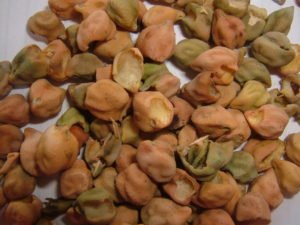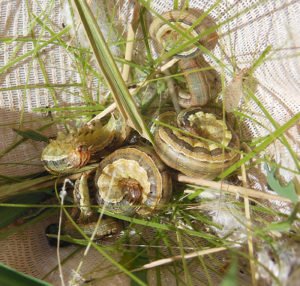Helicoverpa punctigera numbers in pheromone traps look to be on the increase through September. The continued migration of H. punctigera through spring is likely, if suitable weather systems occur, and it is likely that all susceptible crops (chickpea, canola, faba beans, spring mungbeans, spring sunflowers) will experience helicoverpa pressure through October and November.
Peter Gregg and Alice Del Socorro (University of New England) surveyed inland Australia during winter and report that persistent winter rainfall events in central Australia have resulted in a proliferation of native hosts in northern South Australia and far south west Queensland. Recent surveys of wildflowers in these areas have shown very large and widespread populations of H. punctigera larvae, at levels much higher than seen in recent years. With further rainfall, it would be expected that breeding will continue.
The movement of H. punctigera from these inland breeding areas to the eastern cropping regions is dependent on weather systems generating winds capable of carrying the moths long distances. Typically, these systems are the north-westerly winds that precede the passage of rain-bearing weather (e.g. fronts). H. punctigera will migrate even when their inland hosts are still in good condition.
Growers and agronomists are encouraged to continue to monitor susceptible crops even if helicoverpa infestations have already been treated, as high moth activity will put pressure on the residual efficacy of products. Given the wet spring conditions in many areas, it is likely that chickpeas will continue to remain attractive to helicoverpa for longer. Large larvae that have been feeding on green terminal growth in a well podded chickpea crop can cause significant damage to maturing pods.
While winter cereals are not a host for H. punctigera, Helicoverpa armigera and armyworm activity is also expected to be high. Management may become challenging as these populations respond differently to insecticides (for example, NPV is effective against H. armigera in winter cereals, but it has no activity against armyworm). Correct identification is therefore essential.
For more information on armyworm, see the Beatsheet post Armyworms defoliating crops on the Downs.
Article contributors: Richard Lloyd and Melina Miles, Department of Agriculture and Fisheries.



